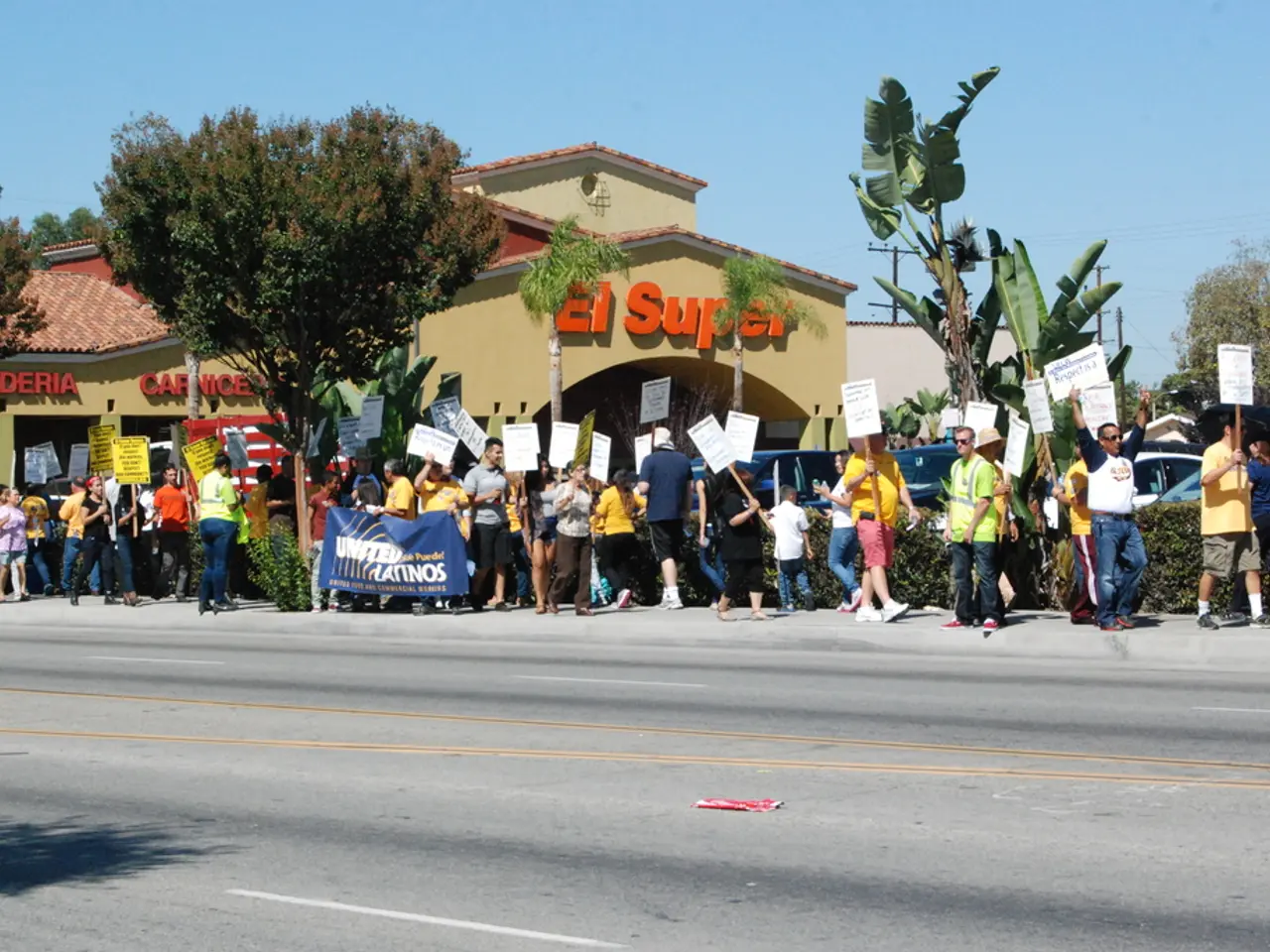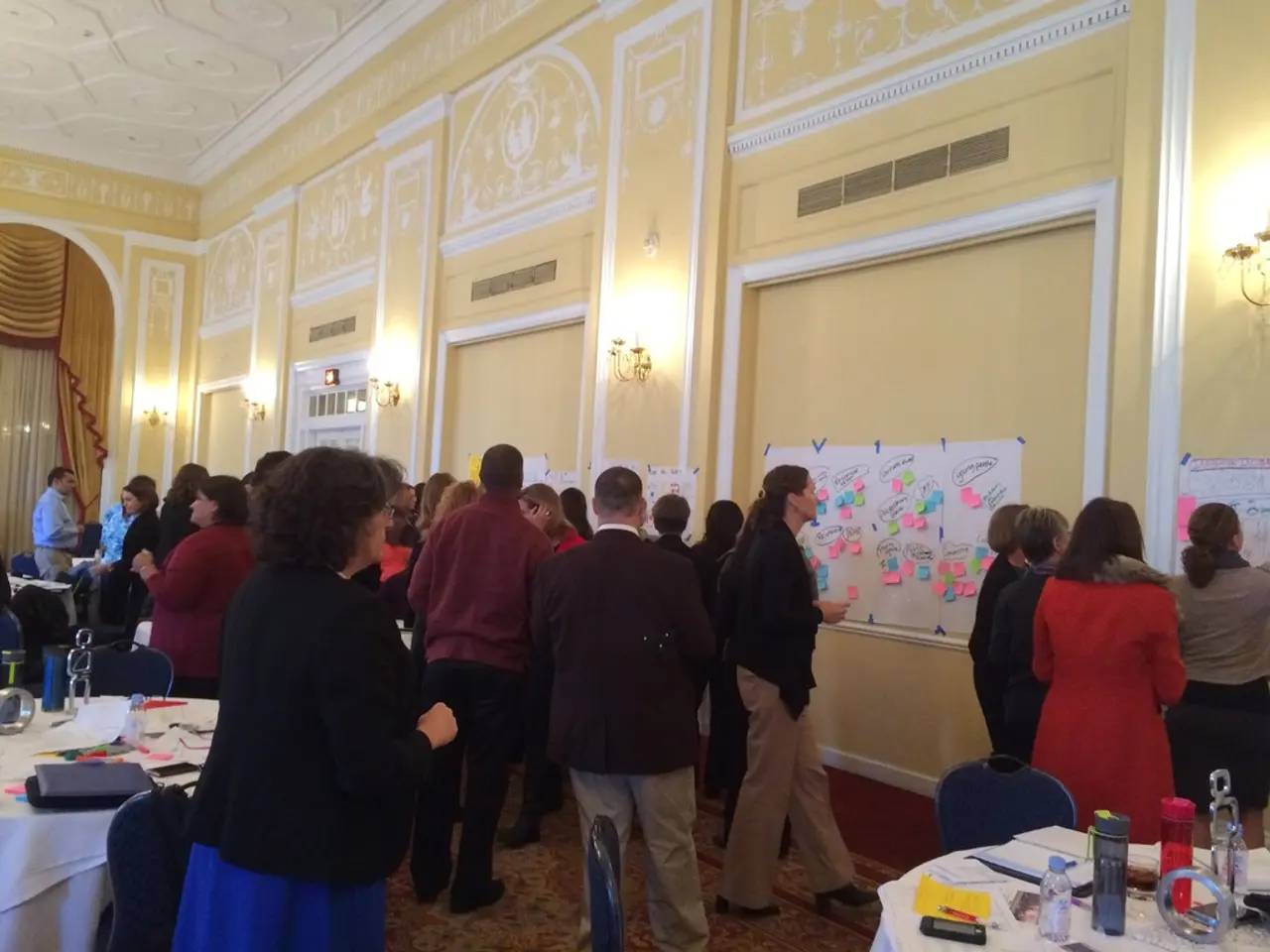Grassroots Lobbying Explained: Involvement of Residents in Local Political Advocacy
Grassroots lobbying is a potent tool for ordinary citizens to influence local government decisions and shape political outcomes. This form of lobbying empowers communities, increases civic participation, and puts pressure on policymakers through collective public voice [1][3].
At its core, grassroots lobbying involves mobilizing individuals to lobby their elected officials and policymakers for specific issues or outcomes. It's a democratic process that allows anyone, regardless of background or experience, to engage in the political process [1].
The Impact of Grassroots Lobbying on Local Political Campaigns
Grassroots lobbying amplifies public pressure on lawmakers, making campaigns more responsive to local constituents and enhancing voter turnout or awareness about specific issues. By encouraging widespread participation, grassroots lobbying creates a more authentic and persuasive political engagement in local contexts [1][3].
Strategies for Effective Grassroots Lobbying
Successful grassroots campaigns employ various tactics to build public support and influence policymakers. Here are some effective strategies:
- Click-to-call advocacy: Mobilizing supporters to call lawmakers using customized scripts and easy-to-use tools that identify their representatives. Individual calls have a greater impact on legislators than emails or other forms of communication [2].
- Online petitions: Leveraging petitions to demonstrate public support for a cause. Clear messaging about goals and impact, along with social sharing features and data tracking for follow-up engagement, are essential [2].
- Building coalitions: Creating alliances with other community groups and stakeholders to strengthen the message and broaden support for the campaign [4].
- Clear messaging: Developing concise, compelling narratives that resonate with local voters and lawmakers, clearly outlining the goals and potential benefits of the campaign [4].
- Direct engagement: Encouraging face-to-face visits, phone calls, emails, and personal storytelling from constituents to their representatives to create personal connections and highlight constituent concerns [1][3].
- Distributing informational materials: Using newsletters, flyers, social media, and local events to educate and rally community members around the key issues [1].
Grassroots lobbying emphasizes communication through personalized, narrowcast methods (mail, phone, personal contact) rather than mass media, making it highly suited for local political campaigns where direct constituent-lawmaker relationships are crucial [3].
Overcoming Challenges in Grassroots Lobbying
Despite its power, grassroots lobbying faces several challenges. Limited resources, political pushback, misinformation, volunteer fatigue, and breaking through media noise are common hurdles. However, clear goals, emotional appeal, relatable stories, data-backed arguments, and a strong call to action make a grassroots message persuasive [1][4].
The Importance of Grassroots Lobbying in Modern Politics
Political campaigns should prioritize grassroots engagement to foster authenticity, build loyal supporter bases, reduce campaign costs, and strengthen long-term political movements. Grassroots lobbying can significantly impact the outcome of a local campaign by building a groundswell of local support and using citizen power [1][2][3][4].
In some cases, grassroots campaigns can become the deciding factor in election results. Real-life success stories include campaigns against local landfills, school funding initiatives, or citizen-led zoning reform victories [1].
Remember, during meetings with elected officials, it's essential to be prepared with specific talking points and be respectful and courteous when engaging [1].
Embrace the power of grassroots lobbying and become an active participant in shaping your local politics. Get involved, find the issues that matter most, and make your voice heard!
[1] Karp, J. (2020). Grassroots Lobbying 101: A Guide for Activists. National Council for Science and the Environment.
[2] Greenberg Quinlan Rosner Research. (2019). Grassroots Mobilization: A Guide for Advocacy Campaigns. Greenberg Quinlan Rosner Research.
[3] Carpenter, R. (2016). The Power of Grassroots Lobbying: How Ordinary Citizens Can Change the World. Oxford University Press.
[4] Tynan, M. (2015). The Grassroots Advocacy Handbook: A Guide to Building Powerful Movements. The Advocacy Institute.
- Grassroots lobbying allows politicians to stay informed about the concerns of their constituents, as resources like online petitions, click-to-call advocacy, and informational materials can help mobilize public opinion on specific issues.
- Influential grassroots campaigns on social media can significantly impact policy-and-legislation decisions, as they can create a groundswell of support among local communities and shine a spotlight on key issues.
- By employing strategies such as building coalitions, direct engagement, and clear messaging, grassroots activists can effectively collaborate with politicians and shape the outcomes of local policy-and-legislation decisions.








